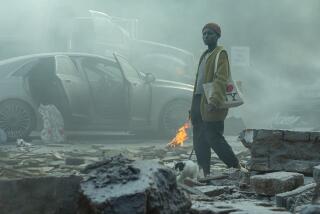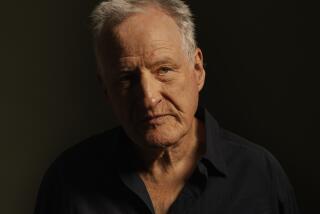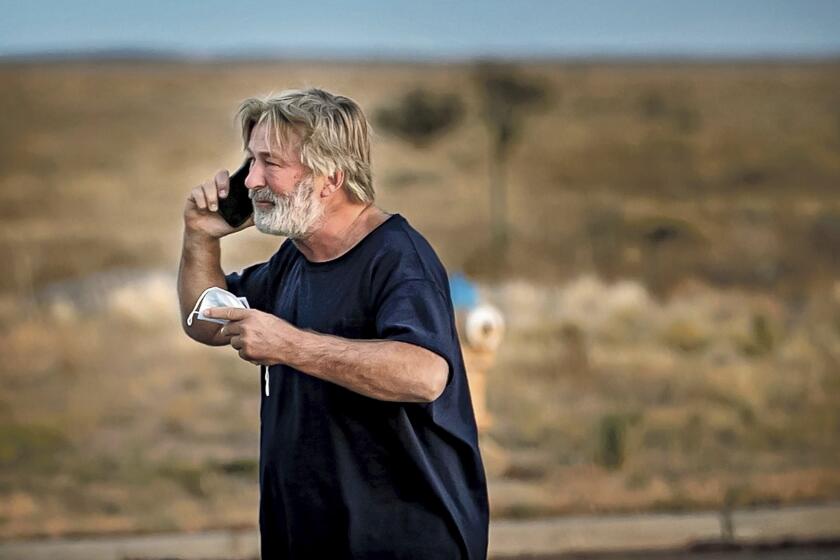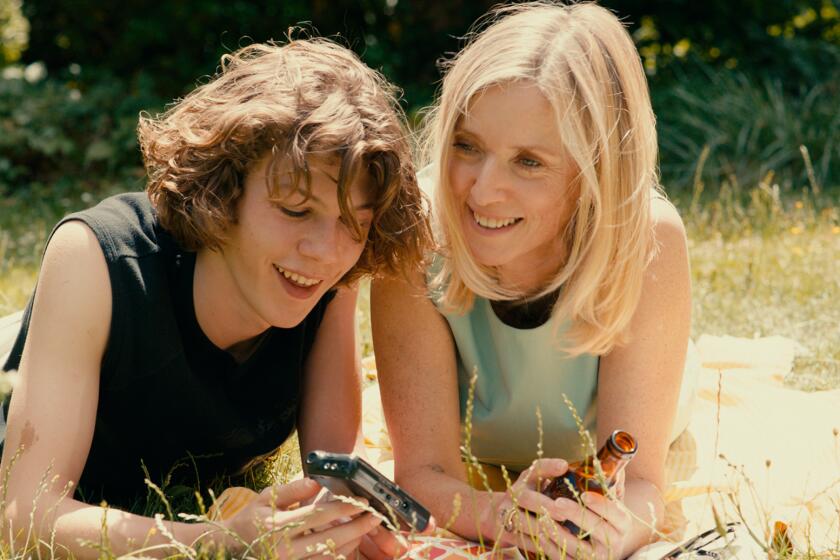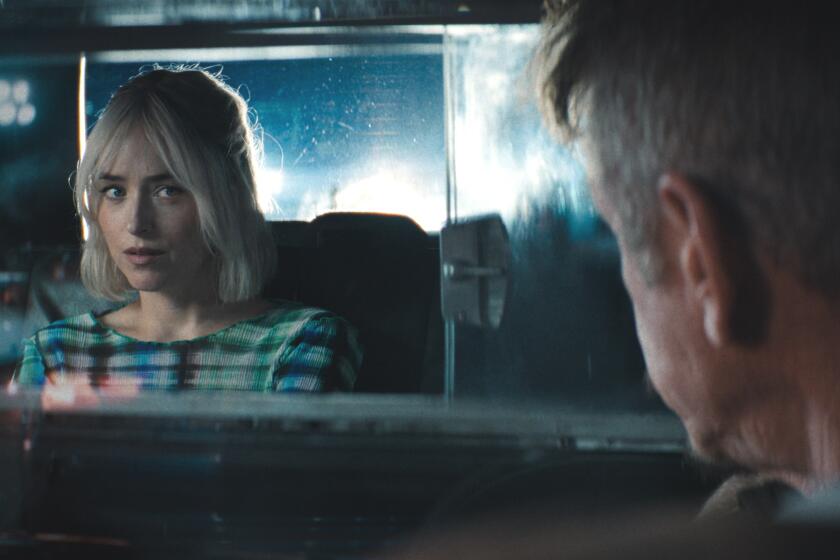Image of the Indian Has Been Massacred on Film for Decades
“The only good Indian is a dead Indian.”
Such dialogue, so odious by today’s standards, was common in Western movies a few decades ago. It stemmed from a remark attributed to Gen. Philip H. Sheridan when he was introduced to a Comanche chief in 1869.
“Me Tochoway,” said the chief. “Me good Indian.”
“The only good Indians I ever saw were dead,” Sheridan snapped.
The attitude of the Indian fighter was illustrated in countless movies from 1920 to 1960. With rare exceptions, Indians were portrayed as bloodthirsty savages who were a menace to white maidens and America’s Manifest Destiny.
In the book “The Western,” George N. Fenin and William K. Everson observe that film audiences seldom saw depictions of “the tragedy of the Indian tribes, pushed backwards and backwards again in violation of treaties and agreements, their confinement to reservations where unscrupulous Indian agents exploited them shamelessly, the disintegration of their fighting spirit and their traditional desire to live in peace with the white man.”
‘Twas not always so. Earlier in the century, movies often focused on the “noble savage” with depictions of James Fenimore Cooper’s stories, the legends of Hiawatha, Pocahontas, Ramona.
As Westerns grew more epic in scope during the 1920s, Indians became ideal villains to attack wagon trains, battle the cavalry and menace the heroine with “a fate worse than death.” Such portrayals continued from silent films into the talkies.
John Ford, the greatest of Western directors, made consistent use of the Indian menace. In his 1924 classic, “The Iron Horse,” railroad builders were attacked by hordes of Sioux, Pawnees and Cheyennes. The most memorable scene of the 1939 “Stagecoach” was the pursuit of the travelers by the fast-riding Indians.
Ford’s depiction of “redskin savages” continued in “Fort Apache” (1948), “She Wore a Yellow Ribbon” (1949) and “Rio Grande” (1950).
In “The Searchers” (1956), Natalie Wood was a white captive who witnessed Indian atrocities and was the wife of a Comanche chief until rescued by John Wayne.
In his last Western, “Cheyenne Autumn” (1964), Ford seemed to seek expiation for his treatment of Indians. The film traced the bitter trek of Cheyennes from a bleak reservation in Oklahoma to their native land in the Northwest. Critics called “Cheyenne Autumn” mawkish and deplored the “Indian” cast of Gilbert Roland, Dolores Del Rio, Ricardo Montalban, Victor Jory and Sal Mineo.
Such non-ethnic castings were common throughout Hollywood history. Among the whites who portrayed Indians are: Anthony Quinn (“The Plainsman,” “They Died With Their Boots On”), Rock Hudson (“Taza, Son of Cochise”), Howard Keel (“The War Wagon”), Chuck Connors (“Geronimo”), Linda Darnell (“Buffalo Bill”), Tony Curtis (“The Outsider”), and Julie Newmar (“McKenna’s Gold”).
Delmar Daves’ “Broken Arrow” (1950) proved a watershed film in Hollywood’s attitude toward the Indian. James Stewart played a scout who marries an Indian woman and sympathizes with the Apache plight.
“Seldom thereafter did filmmakers have the nerve to depict Indians as if they were villains simply because they were red men,” writes Brian Garfield in “Western Films.”
Despite the sympathetic view of “Broken Arrow,” Hollywood casting prevailed: Jeff Chandler as Cochise, Debra Paget as the Indian maid.
Later years brought more films supporting the Indians’ cause: “Tell Them Willie Boy Is Here” (1969), an Indian-turned-cowboy deals with prejudice; “Soldier Blue” (1970), about two white survivors of an Indian attack who trek across the desert; “A Man Called Horse” (1970), Richard Harris’ tour de force as the white aristocrat who lives with Indians and becomes their leader, and “Little Big Man” (1971), a white man (Dustin Hoffman) recounts his history with Indians.
In the 1980s, the Western has virtually disappeared as a film genre. But it still turns up on television, which apparently has much to learn about the Indian image.
Two recent miniseries, “Lonesome Dove” and “Around the World in 80 Days,” portrayed Indians in the appalling cliche of the savage devoted to killing as many whites as possible.
More to Read
Only good movies
Get the Indie Focus newsletter, Mark Olsen's weekly guide to the world of cinema.
You may occasionally receive promotional content from the Los Angeles Times.
